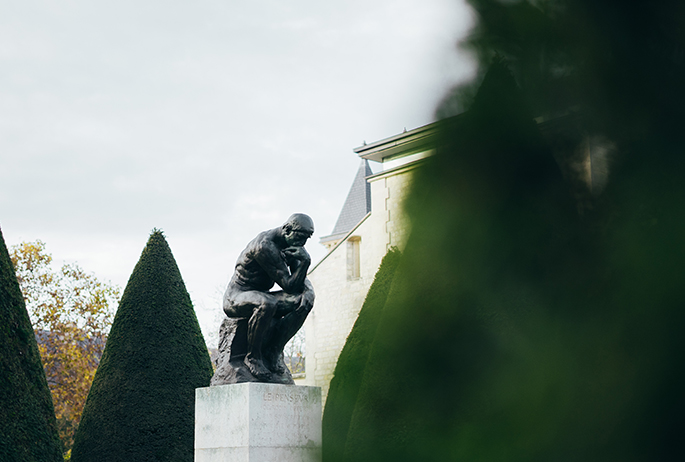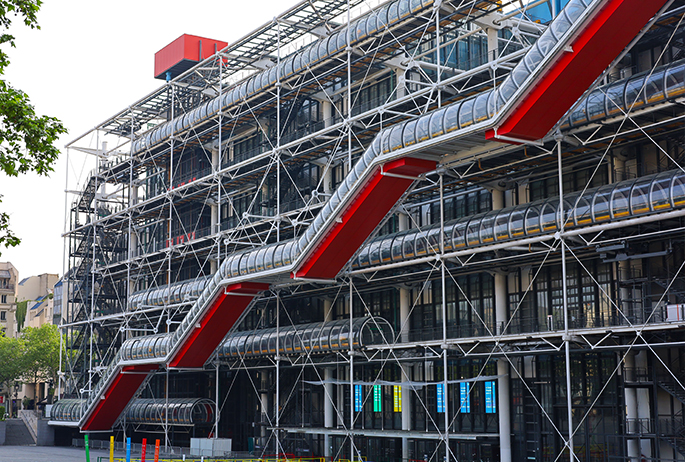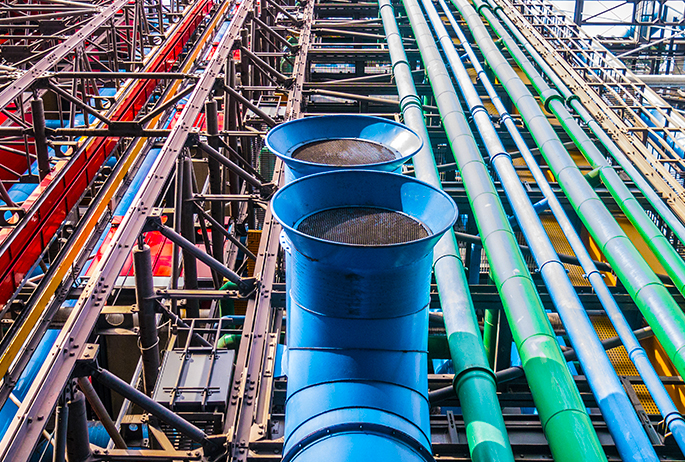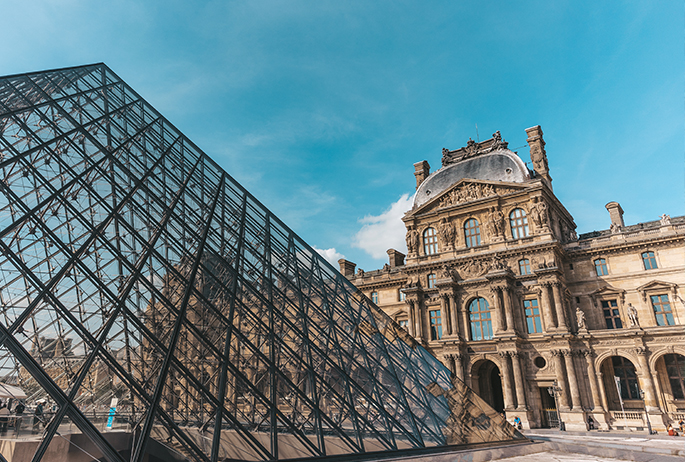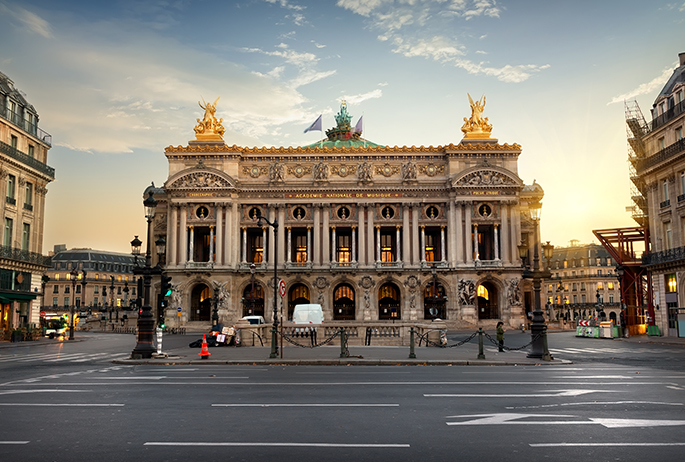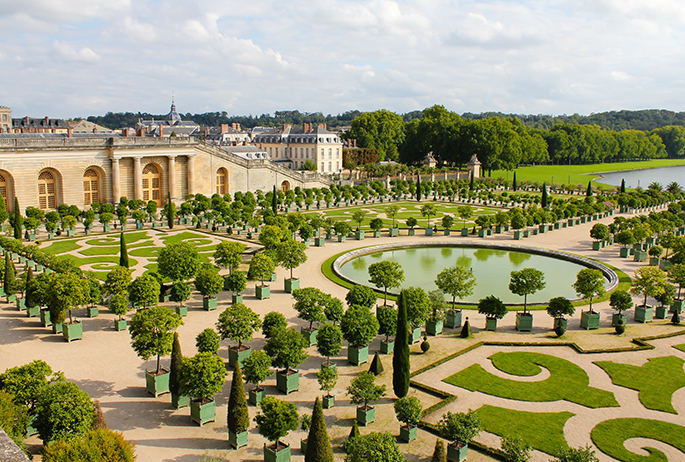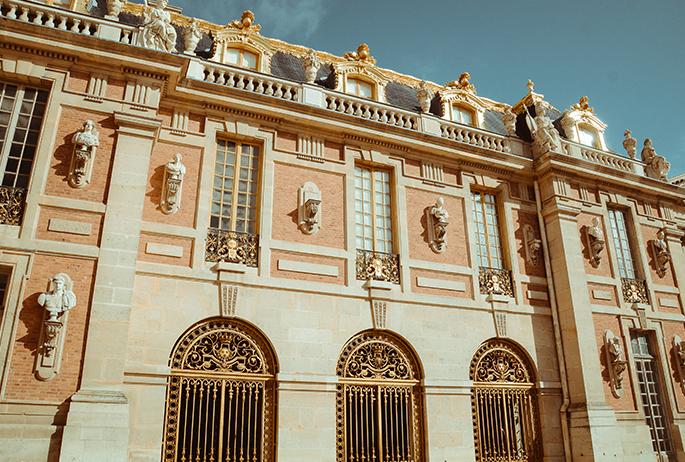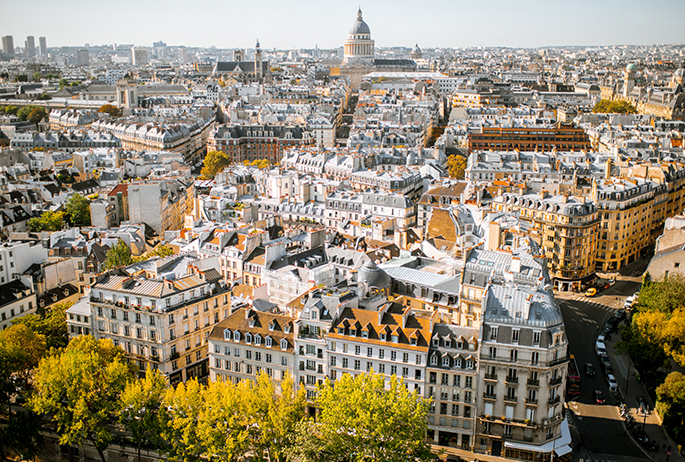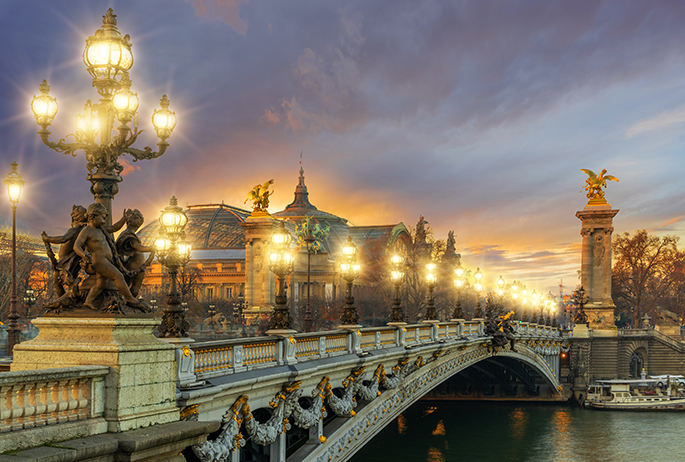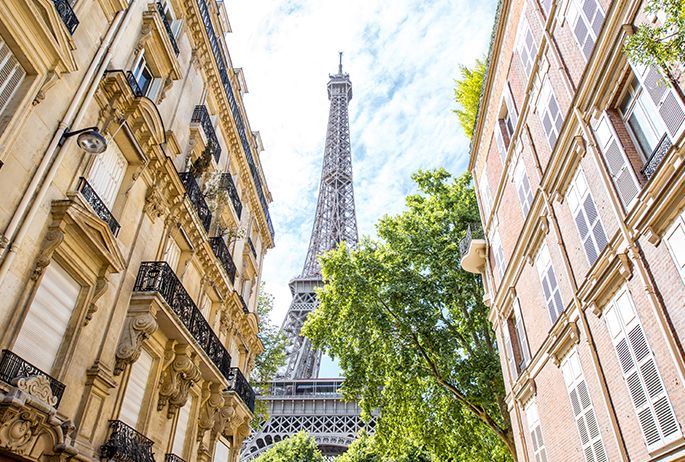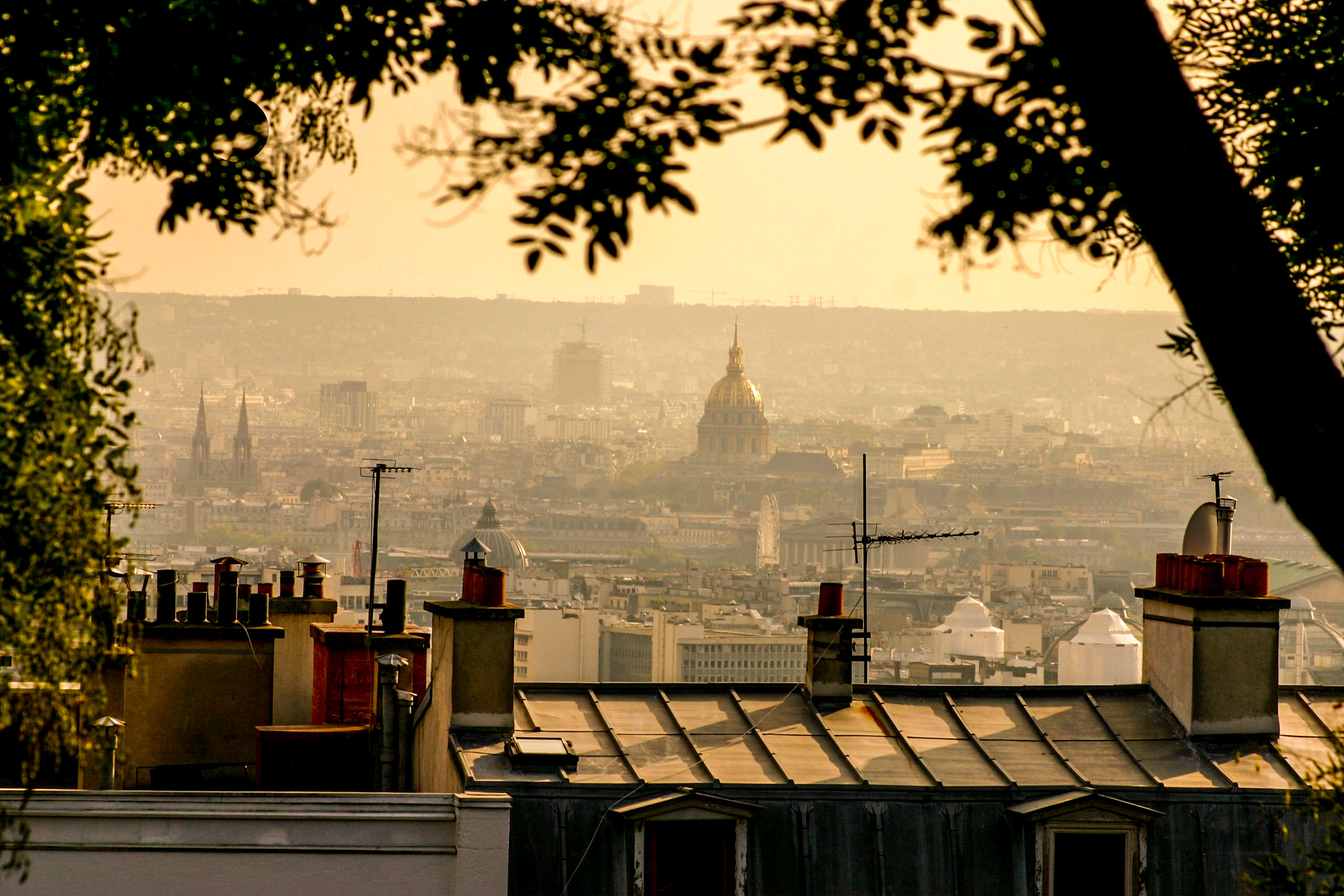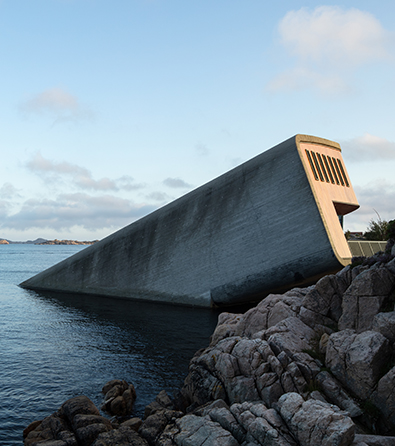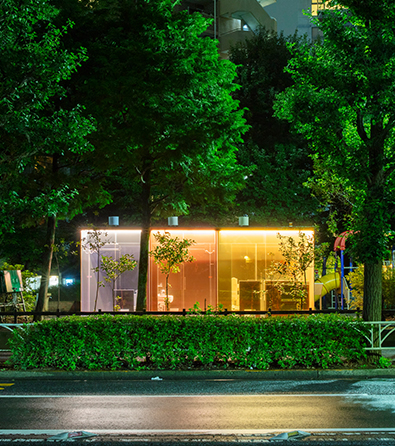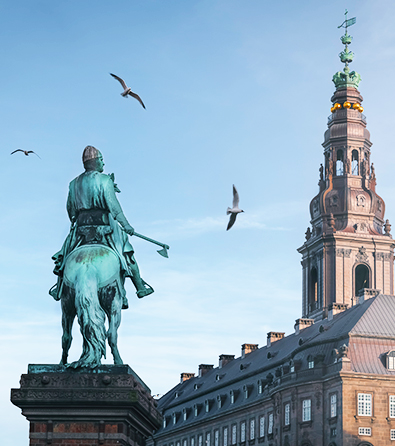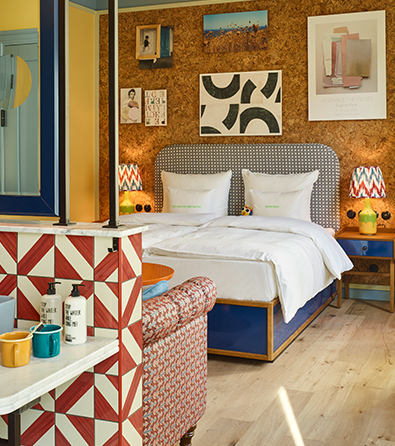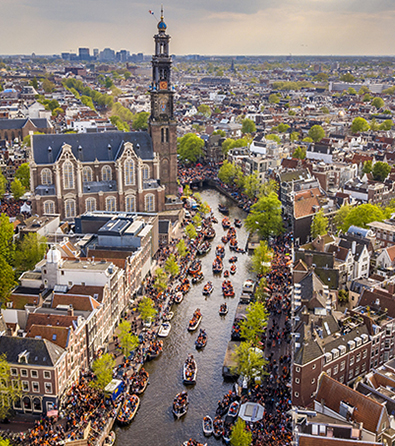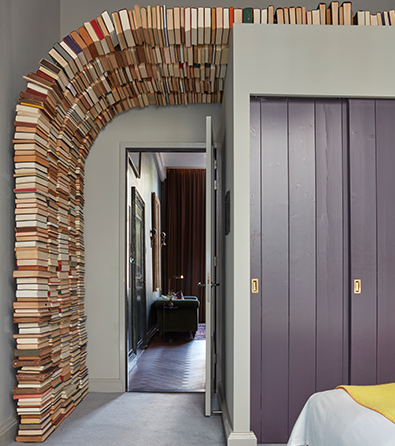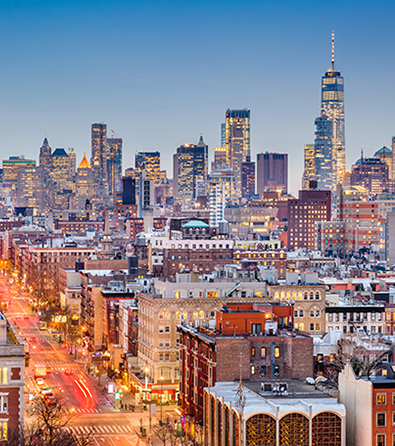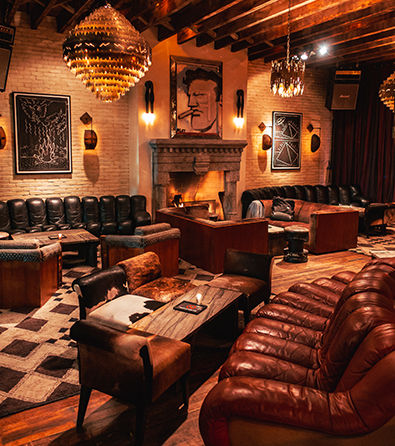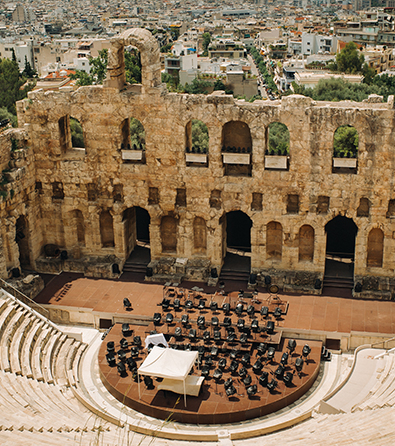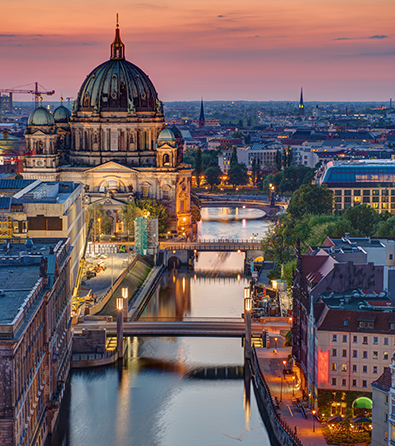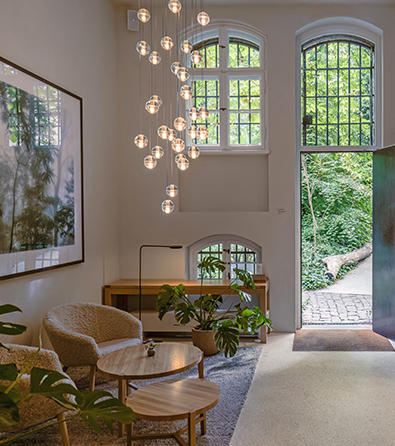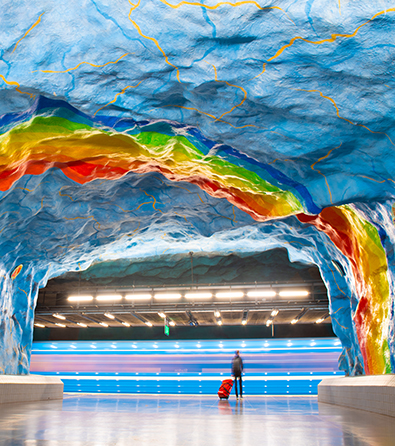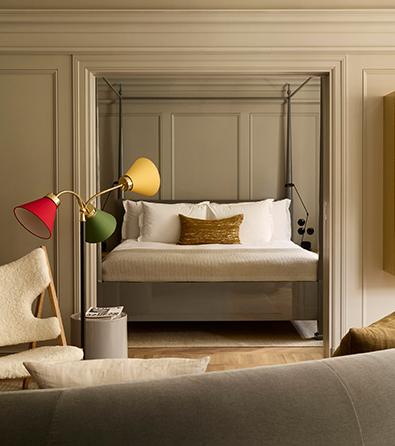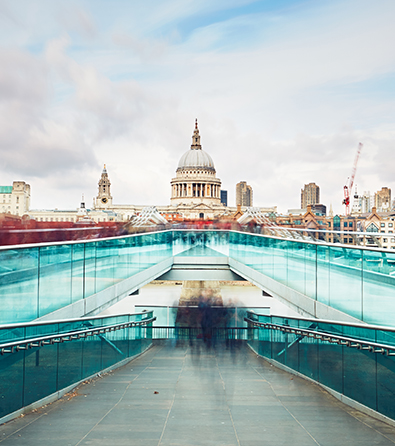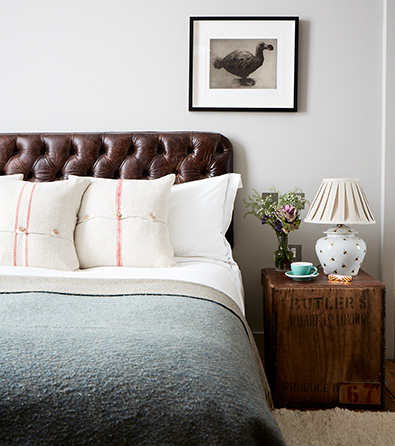Paris is one of the world’s leading cultural capitals, where centuries of artistic legacy meet bold contemporary creativity. From the timeless masterpieces at the Louvre and Musée d’Orsay to the cutting-edge exhibitions at Foundation Louis Vuitton and Palais de Tokyo, the city offers a vibrant fusion of classical and modern expression. With renowned galleries, landmark museums, design-forward boutiques, and inspiring architecture at every turn, Paris remains an essential destination for art and design lovers.
To access our exclusive Paris Treasure Map, simply click the attached link and become a Culture Treasures member. The map pins every place in this guide and adds bonus cafés, boutiques and cultural venues. Planning your stay? Explore our guide to the best design hotels in Paris, along with our curated urban travel essentials and long flight essentials for a comfortable journey.
Art Museums:
Louvre Museum (1st arrondissement / Rue de Rivoli)
Why go: The world’s most visited museum, home to iconic masterpieces spanning thousands of years of art history.
Tip: Buy tickets in advance and plan your route, it’s impossible to see everything in one visit.
Housed in a former royal palace dating back to the 12th century, the Louvre features over 38,000 artworks, including the Mona Lisa, Venus de Milo, and Winged Victory of Samothrace. From ancient Egyptian antiquities to Renaissance paintings and Islamic art, the museum offers a global journey through time and aesthetics. Its iconic glass pyramid, designed by I. M. Pei, marks the main entrance and is itself a modern architectural highlight.
Musée d’Orsay (7th arrondissement / Left Bank of the Seine)
Why go: A former train station turned museum, home to the world’s greatest Impressionist and Post-Impressionist collection.
Tip: Don’t miss the view of Montmartre through the giant clock window on the upper floor.
Located in the Beaux-Arts Gare d’Orsay building, this museum showcases masterpieces by Monet, Degas, Renoir, Van Gogh, Cézanne, and more. With its iron-framed vaults and natural light, the space enhances the vivid brushwork and emotional depth of the 19th- and early 20th-century art it holds. The Musée d’Orsay is especially beloved for its unique blend of historical architecture and modern museography.
Centre Pompidou (4th arrondissement / Beaubourg)
Why go: An architectural icon and home to one of the world’s leading collections of modern and contemporary art.
Tip: Visit the rooftop restaurant Le Georges for panoramic views of Paris alongside contemporary French cuisine.
Designed by architects Renzo Piano and Richard Rogers, Centre Pompidou is instantly recognizable by its exposed skeleton of colorful pipes and external escalators—a radical architectural statement completed in 1977. Inside, the museum houses the National Museum of Modern Art (MNAM), featuring works by Picasso, Kandinsky, Duchamp, Pollock, and Hockney. The building also includes a public library, performance spaces, and temporary exhibitions highlighting contemporary trends across media. Its rooftop terrace offers breathtaking views of the Paris skyline, making it a destination for both art and architecture lovers.
Musée National Picasso-Paris (3rd arrondissement / Le Marais)
Why go: The most extensive collection of Picasso’s work in the world, housed in a 17th-century mansion.
Tip: Visit early in the day for a quieter experience and time to explore temporary exhibitions.
Set in the Hôtel Salé, this museum is dedicated to Pablo Picasso’s diverse oeuvre, including paintings, sculptures, ceramics, drawings, and personal archives. The collection covers all his major periods—from Blue and Rose to Cubism and later works, providing an in-depth look into one of the 20th century’s most prolific and revolutionary artists.
Musée de l’Orangerie (1st arrondissement / Tuileries Gardens)
Why go: Home to Monet’s monumental Water Lilies panels, a peaceful oasis in central Paris.
Tip: Combine your visit with a stroll through the Tuileries Garden or nearby Place de la Concorde.
The museum’s two elliptical rooms were designed by Monet himself to house his Nymphéas series, offering a meditative experience surrounded by panoramic views of water lilies. In addition, the museum features the Jean Walter and Paul Guillaume Collection, with works by Cézanne, Matisse, Modigliani, and Picasso, among others.
Musée Rodin (7th arrondissement / Rue de Varenne)
Why go: A sculptural paradise set in a mansion and garden dedicated to Auguste Rodin’s work.
Tip: The outdoor sculpture garden is a serene spot to admire The Thinker and The Gates of Hell.
Located in the elegant Hôtel Biron, the museum displays Rodin’s most famous works, personal collections, and studio artifacts. The sculpture garden offers a unique open-air experience, blending nature with monumental bronze and marble pieces. The museum also highlights Rodin’s relationship with Camille Claudel and contextualizes his role in the evolution of modern sculpture.
Palais de Tokyo (16th arrondissement / Avenue du Président Wilson)
Why go: One of Europe’s largest contemporary art centers, known for experimental exhibitions and boundary-pushing installations.
Tip: Open until midnight most days, perfect for a late-night art experience.
Housed in an Art Deco building originally constructed for the 1937 Exposition Internationale, Palais de Tokyo spans over 22,000 square meters dedicated to contemporary creation. Unlike traditional museums, it doesn’t hold a permanent collection but instead hosts temporary exhibitions that highlight emerging artists and avant-garde practices across media, from installation to performance art. The museum also includes an art bookstore, creative workshops, and a restaurant with Seine views, making it a multidisciplinary cultural hotspot.
Grand Palais (8th arrondissement / Champs-Élysées)
Why go: A historic Beaux-Arts icon offering blockbuster art exhibitions and large-scale cultural events.
Tip: Currently undergoing renovation, check official updates for reopening phases and temporary locations.
Built for the 1900 Exposition Universelle, the Grand Palais is renowned for its ornate architecture, glass-domed roof, and massive nave that has hosted everything from art fairs and fashion shows to immersive exhibitions. While the main building is closed for renovations until 2025, the Grand Palais Éphémère near the Eiffel Tower temporarily hosts exhibitions under its banner, including collaborations with institutions like the RMN–Grand Palais and Paris Photo.
Petit Palais (8th arrondissement / Avenue Winston Churchill)
Why go: A free museum inside a Belle Époque masterpiece, housing Paris’s municipal fine arts collection.
Tip: Entrance is free to the permanent collection, including masterpieces by Courbet, Cézanne, and Delacroix.
Situated across from the Grand Palais, the Petit Palais was also built for the 1900 World’s Fair and now houses the Musée des Beaux-Arts de la Ville de Paris. Its collection includes works from antiquity to the early 20th century, as well as decorative arts, icons, and rare books. With its stunning architecture, serene inner garden, and airy exhibition halls, it’s one of the most charming, and underrated, art museums in Paris.
Louis Vuitton Foundation (16th arrondissement / Bois de Boulogne)
Why go: A contemporary art museum and architectural landmark by Frank Gehry, featuring major exhibitions and panoramic forest views.
Tip: Book tickets in advance, popular exhibitions often sell out. The rooftop terraces offer stunning photo opportunities.
Nestled within the Bois de Boulogne park, the Louis Vuitton Foundation is a striking glass structure designed by renowned architect Frank Gehry and inaugurated in 2014. The building’s curved sails and reflective surfaces have made it an icon of contemporary architecture in Paris. Inside, the foundation presents rotating exhibitions of 20th- and 21st-century art, with past shows featuring Jeff Koons, Gerhard Richter, Cindy Sherman, and Takashi Murakami. Alongside the art, the venue hosts concerts and cultural programming in its auditorium, making it a multidisciplinary hub at the intersection of visual art, design, and performance.
Pinault Collection at Bourse de Commerce (1st arrondissement / Les Halles)
Why go: A world-class private contemporary art collection housed in a spectacularly restored 18th-century building.
Tip: Visit early to enjoy the central rotunda without crowds. The basement hosts immersive installations that often surprise.
Opened in 2021, the Bourse de Commerce – Pinault Collection presents rotating exhibitions of contemporary art drawn from the private holdings of French collector François Pinault. The museum is located in a historic former grain exchange, transformed by architect Tadao Ando, who inserted a minimalist concrete cylinder into the neoclassical rotunda. This bold architectural gesture contrasts with the building’s painted 19th-century dome, creating a dialogue between old and new. Inside, exhibitions highlight major international artists such as Urs Fischer, David Hammons, and Cindy Sherman, offering a critical look at contemporary society through the lens of cutting-edge art. For a deeper dive into its offerings and history, please refer to our in-depth article about the The Pinault Collection at the Bourse de Commerce.
Art Galleries:
Paris is a hub for contemporary art galleries, showcasing the most innovative and exciting works by both emerging and established artists. Among the top-rated galleries are Galerie Perrotin, which represents a diverse range of contemporary artists, and Galerie Thaddaeus Ropac, known for showcasing cutting-edge conceptual art. Kamel Mennour is another highly respected gallery that represents a roster of acclaimed international artists, including Anish Kapoor and Daniel Buren, while Almine Rech features a wide range of contemporary artists from around the world, such as Jeff Koons and Taryn Simon. Galleria Continua is known for its focus on socially engaged art and represents artists such as Ai Weiwei and Anri Sala. The Gagosian Gallery, one of the world’s leading contemporary art galleries, has a location in Paris that showcases works by some of the most renowned contemporary artists, including Damien Hirst and Takashi Murakami. White Cube is another highly respected gallery that features works by artists such as Tracey Emin and Damien Ortega.
Cité Internationale des Arts is a residency program in Paris that hosts over 1,200 artists annually from various disciplines. It provides artists with the opportunity to live and work in the city, offering studios, apartments, exhibition spaces, rehearsal rooms, and cultural events. Housed in a 17th-century building in the Marais neighborhood, the program provides artists with a unique and enriching experience to immerse themselves in Paris’ vibrant artistic community and engage with fellow artists from around the world. Le Centquatre Paris is another must-visit destination for anyone interested in the city’s vibrant and diverse contemporary art scene. Housed in a former funeral home in the 19th arrondissement, the center offers a range of spaces for artistic expression, including exhibition halls, rehearsal rooms, and a concert hall. The center hosts a diverse range of cultural events, including art exhibitions, live music performances, and theater productions. Visitors can also participate in workshops, attend talks and conferences, and explore the center’s creative spaces, making it a dynamic and innovative cultural center in Paris.
Design:
Musée des Arts Décoratifs (1st arrondissement / Rue de Rivoli)
Why go: A world-class museum for design, fashion, and decorative arts housed in a wing of the Louvre Palace.
Tip: Don’t miss the Fashion and Textile galleries and the rooftop garden views from the upper floors.
Founded in 1905 and located in the western wing of the Louvre Palace, the Musée des Arts Décoratifs (MAD Paris) holds over 150,000 objects spanning from the Middle Ages to the present. Its rich collections include furniture, jewelry, glassware, ceramics, graphic arts, and toys. The museum is particularly renowned for its Fashion and Textile Department, which features garments dating back to the 17th century, including designs by Dior, Gaultier, and other haute couture legends. Temporary exhibitions explore themes like Art Nouveau interiors, contemporary design, and cross-cultural craftsmanship. With elegant galleries and curated displays, MAD Paris offers an immersive journey through centuries of decorative excellence.
Galerie Kreo (6th arrondissement / Rue Dauphine)
Why go: One of the world’s most influential design galleries, known for collectible contemporary furniture and rare 20th-century pieces.
Tip: Explore both the rotating exhibitions and the permanent collection for a full sense of the gallery’s design scope.
Founded in 1999 by Clémence and Didier Krzentowski, Galerie Kreo has become a global reference for contemporary collectible design. Located in the heart of Saint-Germain-des-Prés, the gallery presents limited-edition pieces by leading designers such as Ronan and Erwan Bouroullec, Marc Newson, Pierre Charpin, and Konstantin Grcic. Alongside its cutting-edge exhibitions, Galerie Kreo also features iconic vintage works from masters like Pierre Paulin and Joe Colombo. The gallery’s curatorial focus blends conceptual rigor with technological innovation, reinforcing its status as a “design laboratory” on the global art and design circuit.
Galerie Patrick Seguin (Bastille / Rue de Turenne)
Why go: A global authority on 20th-century French design, particularly the work of Jean Prouvé.
Tip: Don’t miss their curated monographs and catalogues, which offer scholarly insights into the featured designers.
Established in 1989, Galerie Patrick Seguin has positioned itself as a world leader in French modernist design. Located in a minimalist space in the Bastille district, the gallery specializes in the work of Jean Prouvé, alongside seminal pieces by Charlotte Perriand, Pierre Jeanneret, Le Corbusier, and Jean Royère. It regularly stages museum-quality exhibitions and collaborates with top institutions like Centre Pompidou and The Met. With frequent participation in TEFAF, Design Miami, and FIAC, the gallery is a cornerstone of the international collectible design scene.
Shopping Delight:
Colonel (Canal Saint-Martin) – A stylish concept store offering contemporary furniture and home décor with a fresh, minimalist aesthetic.
Merci (Le Marais) – A popular concept store featuring sustainable fashion, curated design items, a cozy café, and an art and fashion bookstore.
Fleux (Le Marais) – A lifestyle destination spread over six boutiques, offering eclectic homeware, lighting, décor, and tech accessories.
Rélique (République) – A curated vintage boutique near Place de la République, known for its unique retro finds and nostalgic atmosphere.
Sennelier (Quai Voltaire) – A legendary art supply store founded in 1887, beloved by artists like Monet and Picasso, offering premium paints, pastels, and papers just steps from the Louvre.
Public Art:
Graffiti art has also become an important part of Paris’ vibrant art scene, with many artists leaving their mark on the city’s streets and walls. One of the most famous graffiti artists in Paris is Blek le Rat, who is often referred to as the “Father of stencil graffiti.” His work can be seen throughout the city, including on the walls of the Pompidou Centre. Other notable graffiti artists in Paris include Jef Aerosol, JR, DaCruz, Kashink, and C215, who are known for their unique styles and powerful messages. While some graffiti is considered illegal and is often removed by authorities, many street art tours offer visitors the chance to see some of Paris’ most interesting and thought-provoking graffiti art. Playground Duperré is a colorful and unique basketball court located in the 9th arrondissement of Paris. Redesigned in 2017 by fashion brand Pigalle and creative agency Ill-Studio, the court features a vibrant geometric design that has become an Instagram sensation.
And Beyond:
Philharmonie de Paris (Parc de la Villette / 19th Arrondissement)
Why go: A landmark of contemporary architecture and acoustics, offering an ambitious program of classical, jazz, and global music.
Tip: Visit the onsite Musée de la Musique and explore the rooftop terrace for panoramic views of Paris.
Designed by Jean Nouvel and opened in 2015, the Philharmonie de Paris is one of Europe’s most innovative concert halls. Located in Parc de la Villette, it features a 2,400-seat auditorium known for its exceptional acoustics and dynamic design. The venue hosts an extensive lineup of performances spanning classical, jazz, experimental, and world music. In addition to concerts, it offers a rich program of educational workshops, family events, and exhibitions. The adjoining Musée de la Musique displays over 1,000 historic instruments, interactive displays, and rotating exhibits on musical culture.
Palais Garnier – Paris Opera House (Opéra / 9th Arrondissement)
Why go: One of the world’s most opulent opera houses, celebrated for its architecture and Paris Opera Ballet performances.
Tip: Book a guided tour to explore the grand staircase, Chagall-painted ceiling, and lavish foyers even if you’re not attending a performance.
Commissioned by Napoleon III and designed by Charles Garnier, this iconic Beaux-Arts building opened in 1875 and remains one of Paris’s most revered cultural institutions. With its gilded interiors, marble staircases, and crystal chandeliers, the Palais Garnier epitomizes 19th-century grandeur. It hosts ballets by the Paris Opera Ballet, classical and contemporary opera productions, and special events. Its architectural features alone merit a visit, including the 7-ton chandelier and ceiling fresco by Marc Chagall.
Bibliothèque Nationale de France – BnF François-Mitterrand (13th Arrondissement)
Why go: France’s national library, with over 14 million books and fascinating exhibitions on French history, literature, and arts.
Tip: Visit the permanent and temporary exhibitions without needing a reader’s card.
The main site of the Bibliothèque Nationale de France (BnF) in the 13th arrondissement is a striking modernist complex designed by architect Dominique Perrault. Known for its four tower-shaped buildings resembling open books, the library is one of the largest in the world. In addition to its extensive archival collections, BnF offers multiple gallery spaces that host exhibitions ranging from medieval manuscripts to contemporary photography. A public garden and café complete the experience for cultural visitors.
Château de Versailles (Versailles / Île-de-France Region)
Why go: France’s most iconic royal palace, known for its opulent architecture, vast gardens, and rich historical legacy.
Tip: Plan your visit early in the day and consider booking a ticket that includes the Musical Fountains Show and Hall of Mirrors.
Located just outside Paris, the Château de Versailles is a UNESCO World Heritage Site and one of the most significant symbols of absolute monarchy in Europe. Originally a hunting lodge for Louis XIII, it was transformed by his son, Louis XIV, the Sun King, into the grandest royal residence in Europe. The palace features over 2,300 rooms, including the legendary Hall of Mirrors, and is adorned with baroque interiors, intricate gilding, and masterful frescoes. Its extensive gardens, designed by André Le Nôtre, include fountains, sculptures, and the Grand and Petit Trianon palaces.
Beyond its historical significance, Versailles also hosts exclusive events such as the Versailles Costume Ball, where guests dress in 18th-century attire and dance to live classical music in the palace’s grand halls. This annual experience, usually held in the Hall of Mirrors, is an immersive celebration of royal elegance and French court culture.
With the interactive map below, you can compare all available accommodation options in the city and find the best prices from a variety of leading providers.
